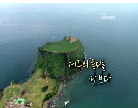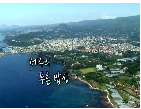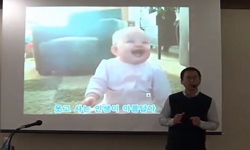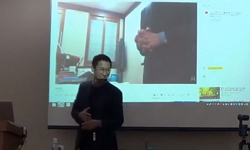표환인은 표류되었다가 돌아온 사람으로 漂人이라고도 한다. 표환인 문정별단은 표환인의 거주지, 표류 일시, 표착지와 표착지의 지형과 사람들의 생활 모습, 지형·민속·의복·음식·農桑...
http://chineseinput.net/에서 pinyin(병음)방식으로 중국어를 변환할 수 있습니다.
변환된 중국어를 복사하여 사용하시면 됩니다.
- 中文 을 입력하시려면 zhongwen을 입력하시고 space를누르시면됩니다.
- 北京 을 입력하시려면 beijing을 입력하시고 space를 누르시면 됩니다.

18세기 ‘문정별단(問情別單)’을 통해 본 중국 표착(漂着) 제주인(濟州人)의 표환(漂還) 실태 = An Analysis on Munjeongbyeoldan for Jeju Island Returnees from Drift in the 18<sup>th</sup> century
한글로보기https://www.riss.kr/link?id=A107808891
- 저자
- 발행기관
- 학술지명
- 권호사항
-
발행연도
2016
-
작성언어
-
-
주제어
표환인 ; 漂還人 ; 표인 ; 漂人 ; 문정별단 ; 問情別單 ; 제주 ; 휘칭 ; 諱稱 ; 표류 ; 漂流 ; 절강성 ; 浙江省 ; 복건성 ; 福建省 ; 대만 ; 臺灣 ; Pyohwanin ; Returnee from drift ; Pyoin ; Drifter ; Munjeongbyeoldan ; Jeju Island ; False statement ; Drift ; Zhejiang province ; Fujian province ; Taiwan
-
등재정보
KCI등재
-
자료형태
학술저널
-
수록면
409-449(41쪽)
- 제공처
-
0
상세조회 -
0
다운로드
부가정보
국문 초록 (Abstract)
표환인은 표류되었다가 돌아온 사람으로 漂人이라고도 한다. 표환인 문정별단은 표환인의 거주지, 표류 일시, 표착지와 표착지의 지형과 사람들의 생활 모습, 지형·민속·의복·음식·農桑·城池·군병, 표착지에서의 이동 거리, 경유지에서의 견문 내용, 체류일자 및 이국에서 대우받은 사항 등이 주요 내용으로 이루어져 있다.
18세기 제주 표환인 문정별단은 시기적으로 영조 17년(1741)에서 정조 3년(1779)에 해당하는 9개 사례이다. 즉, 영조 17년(1741) 김철중(18명), 영조 34년(1758) 김해백(40명), 영조 38년(1762) 김중경(7명), 영조 41년(1765) 김순창(8명), 영조 46년(1770) 부차길(8명), 영조 51년(1775) 김세발(7명), 정조 2년(1778) 5월 고만재(13명), 정조 2년(1778) 8월 고수만(46명), 정조 3년(1779) 윤도준(9명) 등의 표환 사례이다.
결국 9개 사례를 통해서 볼 때에 표류지역은 대부분 제주와 추자도 인근 해역에서 표류하고 있으며, 표착지는 절강성 전잠도, 관산도, 영성현, 복건성 하포현, 장산도, 소주부 영부사, 새사홍도 등 강소성, 절강성 복건성 일대와 대만 지역에 이르고 있다. 귀환 경로는 북경을 거쳐 심양, 책문을 통해 귀국하고 있다. 귀환 경로 중에 대접 받은 내용들은 대부분 음식과 의류이다. 쌀, 돼지고기, 좁쌀, 道尾魚, 메밀국수, 單長衣·單袴·履子, 大布, 大米, 염소, 바지, 방한구, 버선, 신발, 양피옷, 이불, 양피 털 버선, 은자, 당전, 은화 등이었다.
표환인들의 출항은 말 안장, 말, 귤, 전복 등의 진상, 나리포창의 곡식 운반, 갓양태 등의 行商, 유배, 어업 활동 등을 하다가 표류하고 있다. 9개 사례 표환인 총 156명 중에 나이별 분포는 10대 4명, 20대 34명, 30대 55명, 40대 36명, 50대 19명, 60대 6명, 70대 2명의 분포를 보이고 있다. 20~40대가 80% 이상을 차지하고 있어 생산 활동이 강한 사람이 많이 표류하고 있음을 말해 준다. 표류해서 귀환 중에 사망한 양진영, 박천망의 경우처럼 병사자가 발생하였을 경우에는 해당 지역에서 검시가 이루어진 후에 장례가 치루어졌다. 제주거주 사실을 속이고 거짓 진술하는 諱稱은 전라도 영암군 소안도, 강진, 나주 출신임을 밝히는 사례가 있었다.
다국어 초록 (Multilingual Abstract)
Pyohwanin(漂還人, a returnee from drift), who is also called Pyoin(漂人, a drifter), refers to a person who has returned from being adrift on the sea. Pyohwanin Munjeongbyeoldan is largely composed of the following contents about returnees from d...
Pyohwanin(漂還人, a returnee from drift), who is also called Pyoin(漂人, a drifter), refers to a person who has returned from being adrift on the sea. Pyohwanin Munjeongbyeoldan is largely composed of the following contents about returnees from drift: the residential areas; the period of drift; the landing places, and the geographical features and the lifestyles of the residents of the landing places including their manners and customs, clothes and food, the agriculture and sericulture, castles and ponds, and military forces; the distances of traveling in the landing places; the contents of experience in visiting places; the period of stay; the details of their being treated in the foreign country.
Pyohwanin Munjeongbyeoldan of Jeju island in the 18<sup>th</sup> century includes nine cases ranging from 1741 (17th year of King Yeongjo’s reign of the Joseon dynasty) to 1779 (3rd year of King Jeongjo’s reign of the Joseon dynasty). Speaking concretely, they are the returnees from drift: Kim Cheol-jung (18 people) in 1741 (17th year of King Yeongjo’s reign), Kim Hae-baek (40 people) in 1758 (34th year of King Yeongjo’s reign), Kim Jung-gyeong (7 people) in 1762 (38th year of King Yeongjo’s reign), Kim Sun-chang (8 people) in 1765 (41st year of King Yeongjo’s reign), Bu Cha-gil (8 people) in 1770 (46th year of King Yeongjo’s reign), Kim Se-bal (7 people) in 1775 (51st year of King Yeongjo’s reign), Go Man-jae (13 people) in May, 1778 (2nd year of King Jeongjo’s reign), Go Su-man (46 people) in August, 1778 (2nd year of King Jeongjo’s reign), and Yun Do-jun (9 people) in 1779 (3rd year of King Jeongjo’s reign).
When seen through these nine cases, drifts happened mostly on the sea near Jeju island and Chuja island, and their landing areas covered Jiangsu province, Zhejiang province, Fujian province and Taiwan such as Jeonjamdo Island in Zhejiang province, Gwansando Island, Ningcheng county, Xiapu county in Fujian province, Jangsando Island, Yeongbusa in Suzhou prefecture and Saesahongdo island. The return routes covered Beijing, Shenyang and Zhamen. Most of the items provided on the return route were food and clothes including rice, pork, millet, porgy, buckwheat noodles, long clothing for ladies, trousers for men, shoes, hemp cloth, goats, cold weather gears, socks, sheepskin dress, blanket, sheepskin and wool hair socks, silver, Tang coins and silver coins.
Returnees from drift(Pyohwanin) were mostly sailing to present horses' saddles, horses, tangerines and abalones to the king, to transport grain from Naripo port, to sell hat shades and etc, to go into exile or to go fishing, when they got adrift in the sea. The age distribution of in total of 156 Pyohwanin(returnees from drift) shown in the nine cases consisted of 4 people in their 10s, 34 people in their 20s, 55 people in their 30s, 36 people in their 40s, 19 people in their 50s, 6 people in their 60s and 2 people in their 70s. People in their 20s to 40s account for more than 80%. This means that people who were active in production made up the majority of drifters. In a case where a drifter died of sickness on the way back from drift like the cases of Yang Jin-yeong and Park Cheon-mang, the funeral was conducted after the corpse was examined in the relevant district. There were cases of false statements such as hiding the fact of residing in Jeju Island and telling a lie of being from Soan Island in Yeongam-gun, Gangjin and Naju, Jeolla province.
동일학술지(권/호) 다른 논문
-
이미지와 시가(詩歌)의 문화정치학(Ⅱ)-일제시대 사진엽서의 경우-
- 인하대학교 한국학연구소
- 최현식 ( Choi Hyun-sik )
- 2016
- KCI등재
-
- 인하대학교 한국학연구소
- 박혜숙 ( Park Hye-sook )
- 2016
- KCI등재
-
- 인하대학교 한국학연구소
- 정영진 ( Jung Young-jin )
- 2016
- KCI등재
-
1910년대 한국근대소설이 보여준 사회진화론과 근대 극복의지의 한 양상, 양건식의 사상과 문학세계(1)-「서철강덕격치학설(西哲康德格致學說)」을 중심으로-
- 인하대학교 한국학연구소
- 유봉희 ( Yu Bong-he )
- 2016
- KCI등재




 KCI
KCI KISS
KISS






